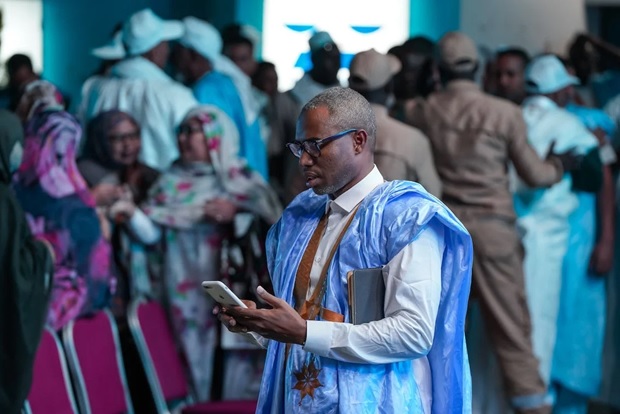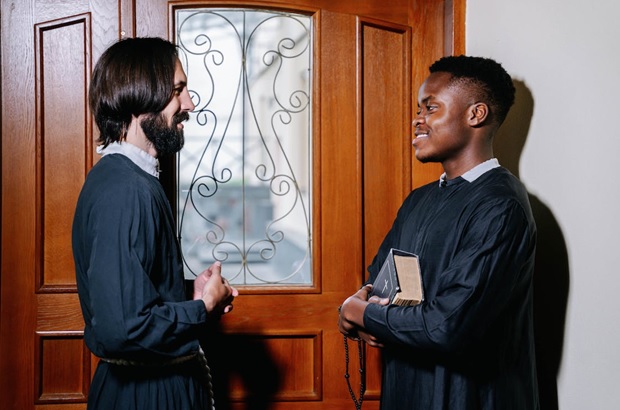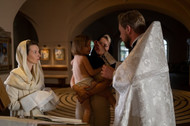Clergy as Community Leaders: Beyond the Pulpit
Oct 26th 2023
Clergy, comprising priests, pastors, ministers, and other religious leaders, play an essential role in society that extends well beyond the confines of their places of worship.
While their primary role is to guide and nurture the spiritual lives of their congregants, they also serve as community leaders who address social issues, provide support, and contribute to the welfare of their congregations.
But what makes up the multifaceted and vital role of clergy as community leaders?
Fostering Spiritual Growth
At the core of their roles, clergy members serve as spiritual guides and educators. They provide a source of comfort, inspiration, and ethical guidance. Through their sermons, teachings, and pastoral care, they help individuals find meaning and purpose in their lives.
The spiritual support offered by clergy can be a source of strength, particularly during challenging times. Many churchgoers immediately feel a sense of reverence when they see a person wearing clergy robes for men or women. They recognize that the person has the wisdom to help them through a difficult time.
Addressing Social Issues
Clergy frequently take on the role of social advocates. They are well-positioned to address social issues such as poverty, inequality, and discrimination. Through their influence and moral authority, they can engage in discussions about these problems and work toward solutions.
Many religious leaders and organizations are actively involved in initiatives like feeding the hungry, providing shelter to the homeless, and advocating for social justice. Often they wear clergy robes for men and women when they preach to their listeners, ensuring that they not only represent their congregation, but also speak with the authority of their church.
Crisis Intervention and Support
In times of personal crisis, clergy members often serve as a crucial source of support. Whether individuals are facing illness, bereavement, or personal challenges, clergy offer a compassionate ear, spiritual guidance, and often act as a pillar of emotional support.
Their presence during these times can be profoundly comforting, providing a sense of belonging and care.
Community Building and Fellowship
Clergy members foster a sense of community within their congregations. They create spaces for people to come together, share experiences, and build connections. In doing so, they help combat social isolation and create networks of support.
The church, mosque, synagogue, or temple often becomes a hub for community activities, encouraging relationships that extend beyond the religious service.

Promoting Values and Ethics
Clergy play a vital role in instilling values and ethics in their communities. Through their teachings and actions, they emphasize principles like compassion, forgiveness, and generosity. These values form the foundation of ethical behavior and are essential for building a cohesive and empathetic society.
Crisis Leadership
During societal crises, such as natural disasters or public health emergencies, clergy often step into leadership roles. They provide comfort, organize relief efforts, and coordinate community resources. Their presence in such situations can be a beacon of hope and resilience.
Counseling and Mental Health Support
Clergy members frequently provide counseling services for their congregants. While they are not licensed therapists, they offer a listening ear and guidance, and they can be instrumental in referring individuals to professional mental health services when needed.
Their understanding and empathetic approach can be invaluable in addressing mental health concerns within the community. Even if they are not preaching, they can give counsel to anyone who seeks their advice.

The Clergy’s Service and Their Clergy Robes
It’s not surprising that given these services to their community, the wearing of clergy robes have become rich in symbolism. They signify dedication, humility, and service to a higher calling. Many priests and pastors often wear clergy robes for men and women when doing acts of service, as their community immediately recognizes them as leaders and guides within the community.
These symbols can evoke a sense of reverence and respect among the congregation, reminding them of the sacred purpose of the clergy. This symbolic aspect provides a strong foundation for community building.
Creating a Sense of Unity
Clergy robes, often uniform in design and color, create a visual unity among the clergy. When individuals see their religious leaders dressed alike, it reinforces a feeling of togetherness. It serves as a reminder that, despite our differences, we are all part of one faith community. This unity is not only comforting but also encourages fellowship among the congregation.
Fostering Trust and Approachability
The attire of clergy, while symbolizing reverence, also makes them easily recognizable. This recognition builds trust, as people know where to turn for guidance and support. The robes can make the clergy appear approachable, making it easier for the congregation to seek spiritual advice, counseling, or simply to connect on a personal level. This open communication fosters a stronger sense of fellowship.
Working in the Community in Civilian Gear
Of course the question is whether priests and pastors can still do their service even if they are not wearing their church garb. Certainly, priests can continue to work as leaders within their religious communities even when they do not wear their robes.
The leadership of a priest is not solely dependent on their attire but rather on their knowledge, dedication, and ability to serve their congregation. While robes have symbolic significance and can facilitate certain aspects of community building, they are not the sole determinants of a priest's leadership role.
Priests can be effective leaders when they connect with their congregants on a personal and spiritual level. Leadership qualities such as compassion, guidance, and strong moral principles are not tied to attire. Priests who are approachable, empathetic, and provide spiritual guidance can effectively lead their communities regardless of their attire.
It's important to note that the choice to wear robes or not often depends on the religious tradition and individual preferences. Some denominations and priests may opt for more casual attire, while others may choose to wear robes as part of their religious tradition.
Ultimately, what matters most is the priest's ability to fulfill their role as a spiritual leader and foster a sense of community and fellowship within their congregation.
Spiritual Leadership Goes Beyond Robes and the Pulpit
Clergy members are not limited to their roles as spiritual leaders. They are also integral community leaders who address social issues, provide support, and contribute to the overall well-being of their congregations.
Their influence extends far beyond the pulpit, and even if they are wearing civilian clothing. Their work impacts individuals and communities in ways that foster spiritual and social growth, and the building of resilient and compassionate communities. The role of clergy as community leaders remains a vital and enduring one, shaping the moral and social fabric of society.
